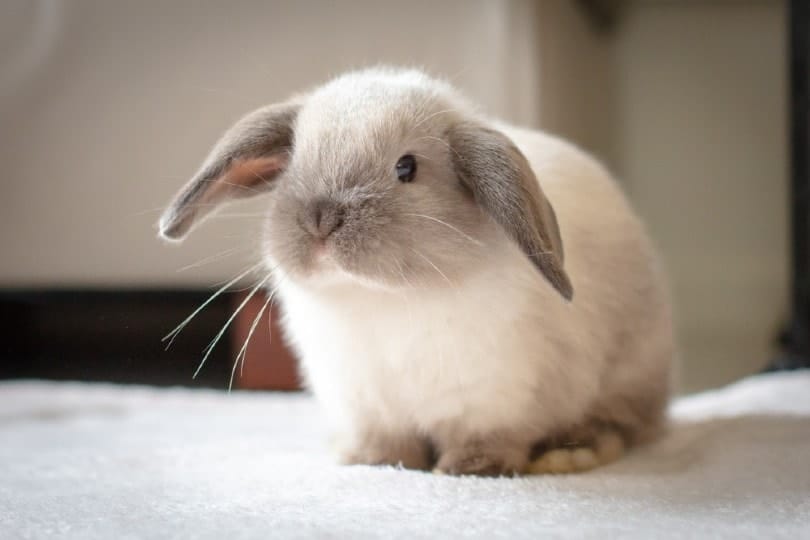Besides being so very cute, the Mini Lop Rabbit is a favorite bunny because they are so sweet and cuddly. These rabbits will stay smaller than a regular rabbit and they make a great pet for children.
The Mini Lop Rabbit is lively and smart. Not only are they very “huggable” and playful, they are known to be successfully litter-box trained. They make great companions that like to interact and appreciate affection, and are often described as being like a pet dog.
Both the Mini Lop and the Holland Lop are miniaturized versions of the Lop-earred Rabbit.
- For more information about Rabbits and their care: Guide to a Happy, Healthy Rabbit
Scientific Classification
| Kingdom: | Animalia |
| Phylum: | Chordata |
| Class: | Mammalia |
| Order: | Lagomorpha |
| Family: | Leporidae |
| Genus: | Oryctolagus |
| Species: | cuniculus |
Background
Mini Lops were derived from German lops called “Kleine Widder” lops, but it is thought that a variety of breeds have been used in developing the Mini Lop that is found in the United States today. Mini Lops were recognized as their own accepted breed in the United States in 1982, but neither they nor the Holland Lop are yet recognized in England.
Description
Besides having the characteristic floppy ears, Mini Lops have a muscular build with broad shoulders, deep chests, and short, thick legs. Their adult size is generally only about 5 1/2 to 6 1/2 pounds.
Color differences
Mini Lop rabbits come in all colors.
For showing, the American Rabbit Breeders Association, Inc. (ARBA) and the Mini Lop Rabbit Club of America have recognized colors and guidelines.
The recognized color groups are:
- Agouti: includes chinchilla, chestnut agouti, and opal.
- Broken: which are white with colored spots and /or pattern, including tri colors.
- Ticked: these have a steel gene and ticking, colors include: gold tipped or silver tipped black/blue/chocolate/lilac steel, silver fox, sable or smoke pearl steel.
- Self group, white pointed: these are a solid color with no ticking and include includes: black, chocolate, blue, ruby eyed white, lilac, etc.
- Shaded: these show shaded markings with colors such as: seal, sable point, sable, smoke or frosted pearl, tortoise, etc.
- Wide band: includes cream, red, orange, and fawn.
- Classifications include: solid pattern and broken pattern
There are also many colors that are not recognized (though some are in the process of becoming recognized) including: harlequin, otter, silver marten, blue seal, broken pointed white, chocolate or blue point, etc.
Featured Image Credit: FiledIMAGE, Shutterstock
